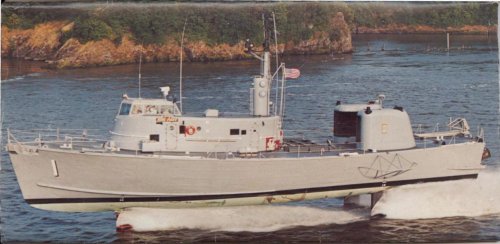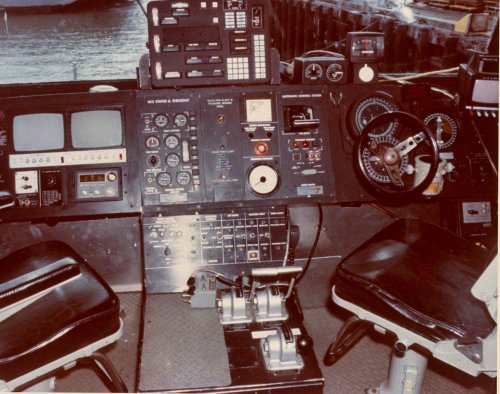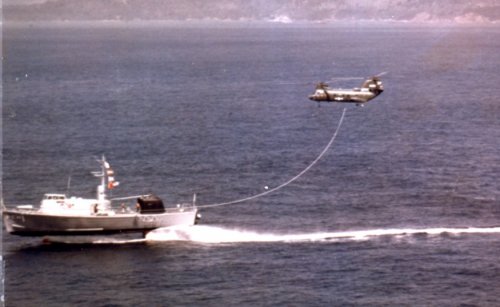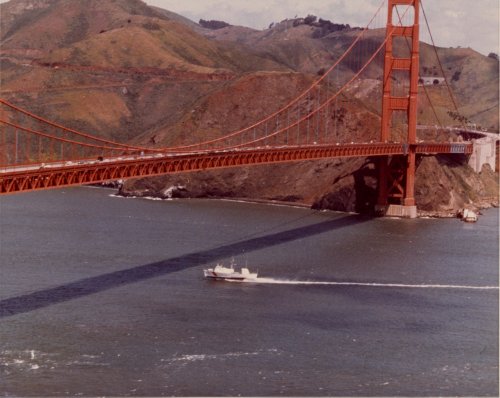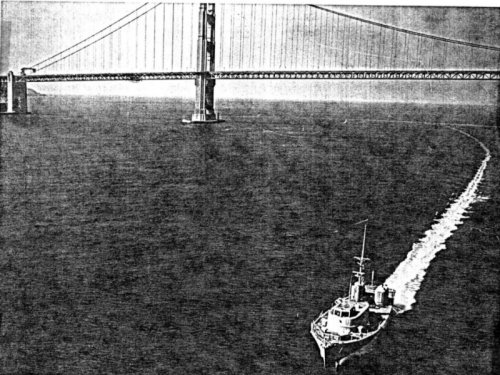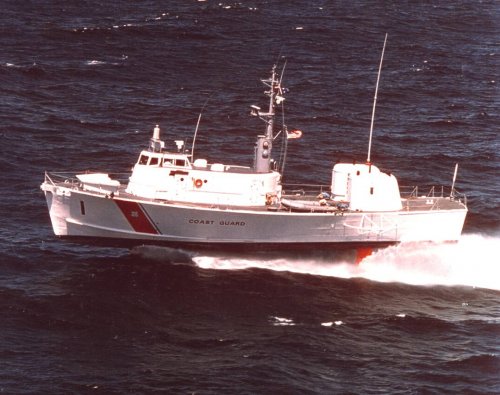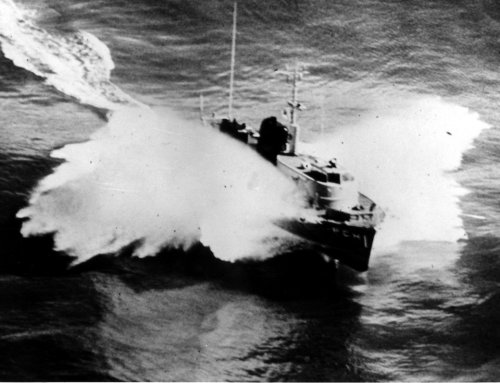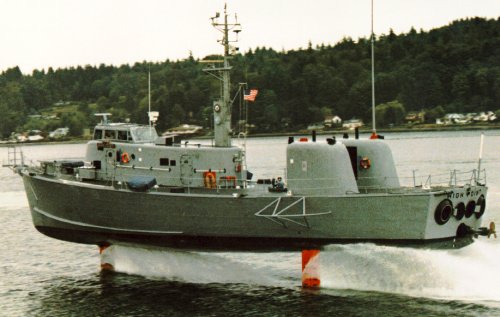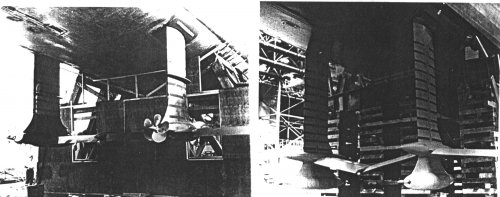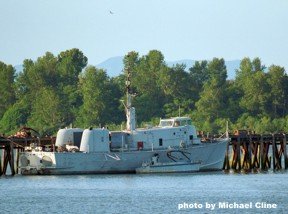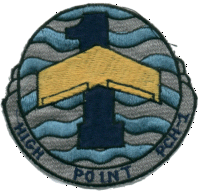The PCH 1 was originally intended to be the Navy's first operational hydrofoil craft. On January 24, 1958, the Chief of Naval Operations requested the Bureau of Ships to perform a design study of hydrofoil craft for harbor defense and coastal patrol. Results of this study were reported to OPNAV on March 7, 1958 recommending that hydrofoil patrol craft replace PCs and SCs in the FY 1960 shipbuilding program. On July 25, 1958 the Ship Characteristics Board (SCB) issued ship characteristics for a Patrol Craft Hydrofoil (PCH). Bureau of Ships Code 420 was directed to provide a preliminary design of a PCH. This was completed on March 5, 1958 and turned over to the Hull Design Branch, Code 440, for contract design.
The PCH contract plans and specifications were approved on January 18, 1960, and a $2.08M fixed -price contract for construction was awarded to the Boeing Company in June 1960. Boeing awarded a subcontract to Martinac Shipbuilding for construction, and the keel was laid on February 27, 1961 at the Martinac Shipyard in Tacoma, Washington. PCH 1 was launched on August 17, 1962 and christened HIGH POINT in honor of the city of High Point, North Carolina. On November 13, 1962, CINCPACFLT tentatively assigned her to COMASWFORPAC with the expectation that she would be assigned to Anti-Submarine (ASW) forces.
After completion of Final Acceptance Trials on January 28, 1963, HIGH POINT was delivered to the Navy at the Puget Sound Naval Shipyard (PSNS) on August 15, 1963. On May 7, 1964, CNO approved the request of PSNS for a 9-month extension of HIGH POINT 's availability for special performance trials and, on October 22, a decision was made to effect extensive repair and refurbishment of the ship.
On March 28, 1965, the Bureau of Ships requested DTMB to become the Technical Agent for Navy hydrofoil R&D. This resulted in the establishment and staffing of the DTMB Hydrofoil Development Project Office (Code 050) under Wm. M. Ellsworth, reporting to the Technical Director of the Laboratory. Early deficiencies in HIGH POINT had made it clear that there was a pressing need for additional R&D before hydrofoil craft would be ready for deployment to the Fleet. To this end, DTMB established a Hydrofoil Special Trials Unit (HYSTU) as a tenant activity of the Puget Sound Naval Shipyard. HIGH POINT was placed under technical and administrative control of HYSTU and operational control of COM-13 for the conduct of an extensive R&D test program.
At this point, an extensive R&D effort, described in this book, was undertaken during which HIGH POINT became a prime platform for expanding the technology base for hydrofoil craft. This included an evaluation of the ship by the Coast Guard as a cutter (WMEH 1) in April 1975.
In the years that followed, the expanding knowledge base of hydrofoil systems design and application led to design, construction, test, and evaluation of a number of hydrofoil test craft. In the mid 1970s this culminated in the acquisition of a squadron of six Navy Patrol Hydrofoil Missile (PHM) ships. They were built by Boeing and deployed to Key West, FL. Working with the Coast Guard, they demonstrated the many advantages of these high performance ships, with heavy firepower, and the capability of very high speed in very rough seas. The technology developed in this program also contributed to the building of several types of commercial hydrofoils such as the Boeing Jetfoil.
HIGH POINT was deactivated on December 01, 1984, and her Navy crew was reassigned. She had spent twenty good years in making major contributions to the knowledge of how to design and operate military and commercial hydrofoil ships. -- Wm. M. Ellsworth, P.E.
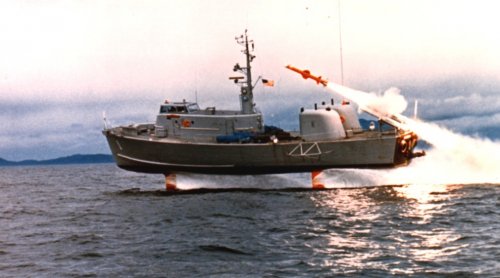 HY43HIGHPT.HARPOON.JPG105.6 KB · Views: 216
HY43HIGHPT.HARPOON.JPG105.6 KB · Views: 216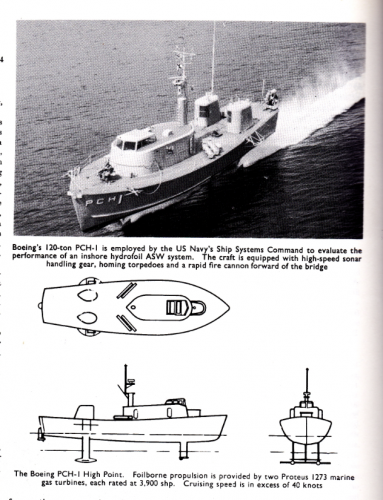 Boeing PCH 1 High Point.png749.8 KB · Views: 57
Boeing PCH 1 High Point.png749.8 KB · Views: 57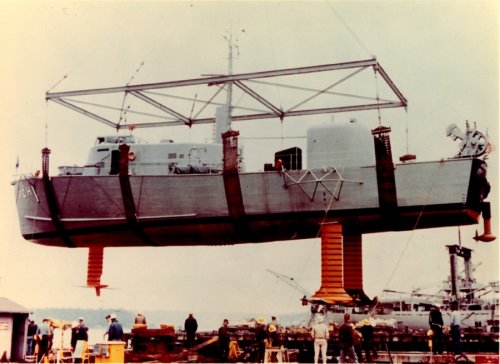 HY42AHIPTHANG.JPG123.7 KB · Views: 36
HY42AHIPTHANG.JPG123.7 KB · Views: 36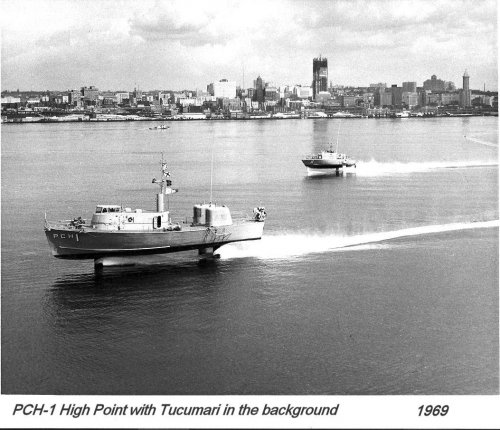 PCH-1_HIGHPOINT_with_Tucumari.jpg227.9 KB · Views: 30
PCH-1_HIGHPOINT_with_Tucumari.jpg227.9 KB · Views: 30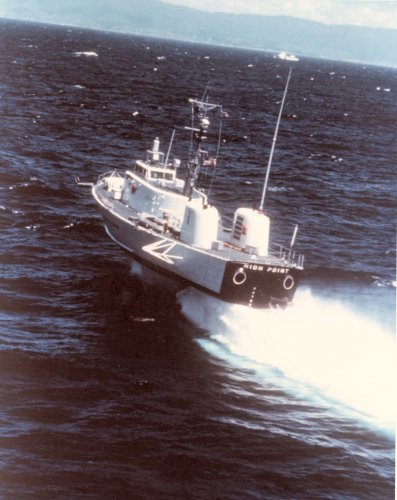 highptcg3.jpg563.6 KB · Views: 35
highptcg3.jpg563.6 KB · Views: 35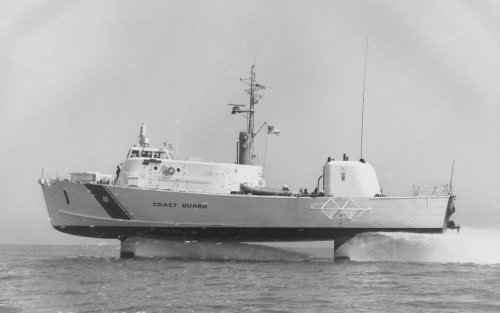 highptcg2.jpg1.7 MB · Views: 43
highptcg2.jpg1.7 MB · Views: 43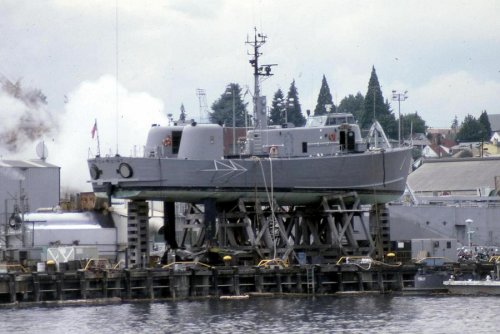 High Point PCH1-03.jpg75 KB · Views: 189
High Point PCH1-03.jpg75 KB · Views: 189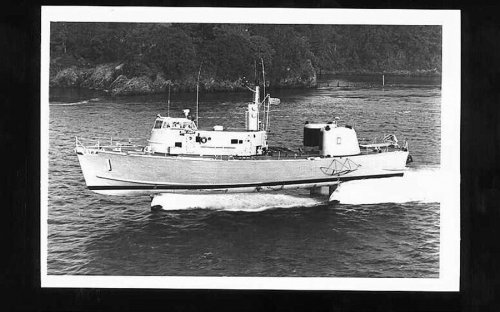 High Point PCH1-02.jpg79.2 KB · Views: 204
High Point PCH1-02.jpg79.2 KB · Views: 204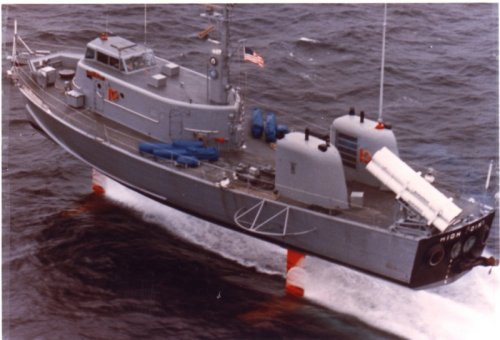 HY42HIGHPOINT.JPG88.4 KB · Views: 218
HY42HIGHPOINT.JPG88.4 KB · Views: 218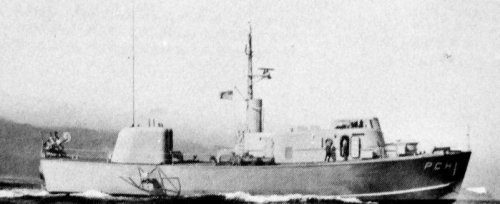 High Point PCH1-01.jpg35.9 KB · Views: 210
High Point PCH1-01.jpg35.9 KB · Views: 210
